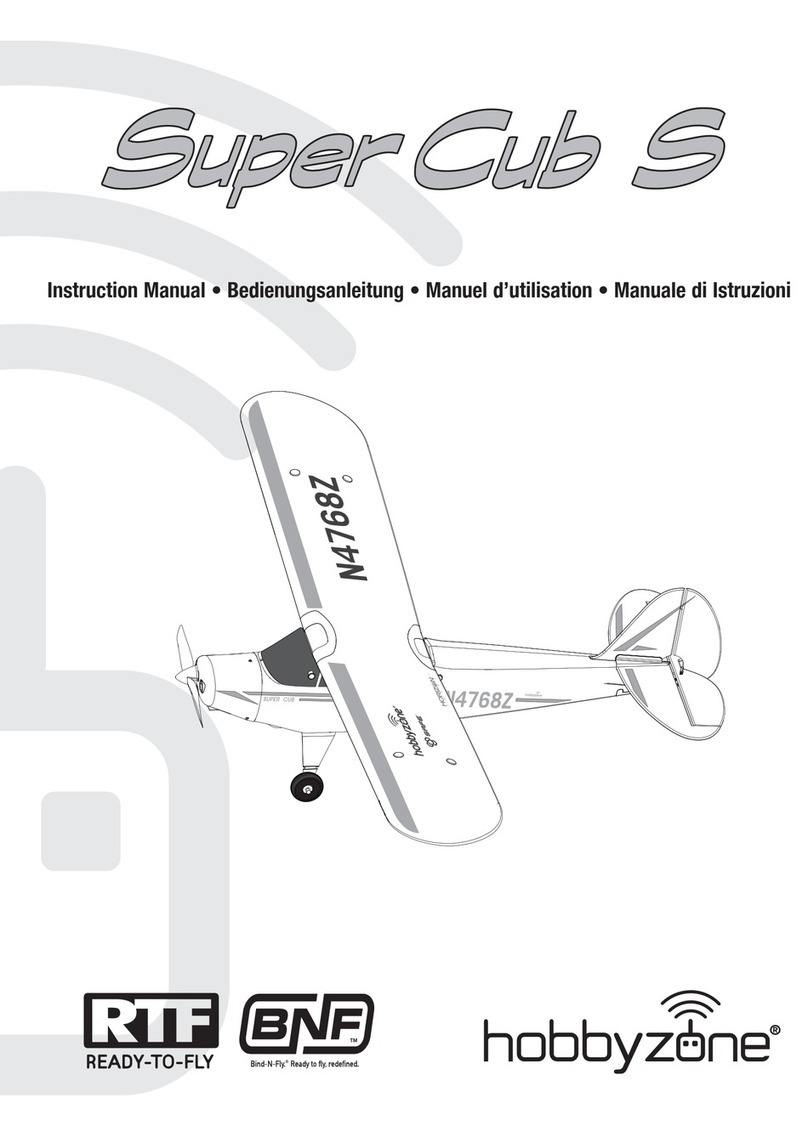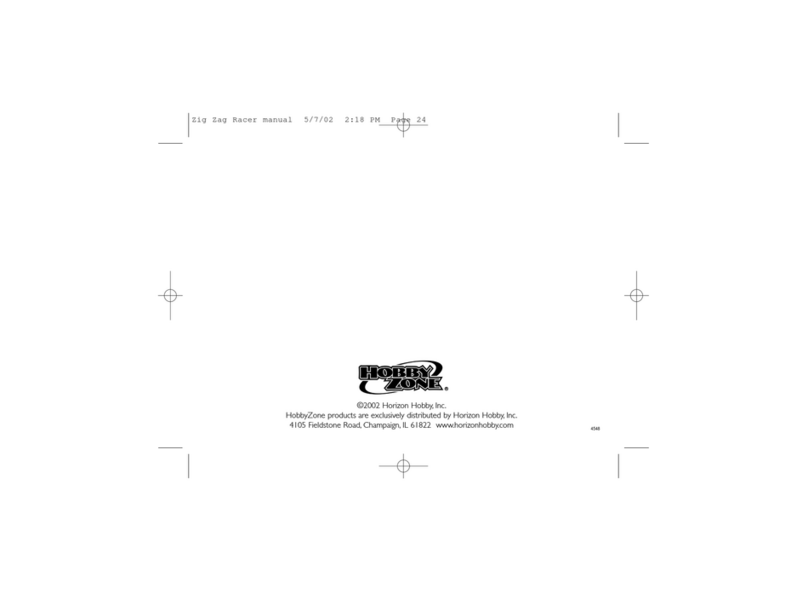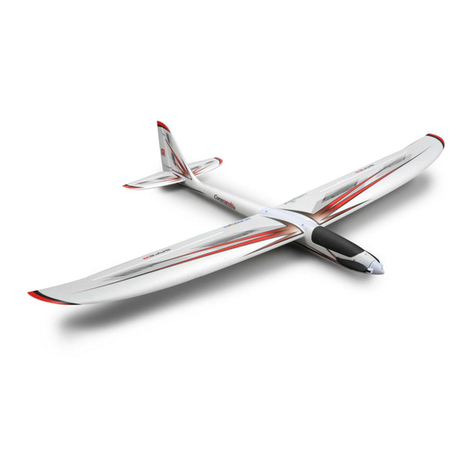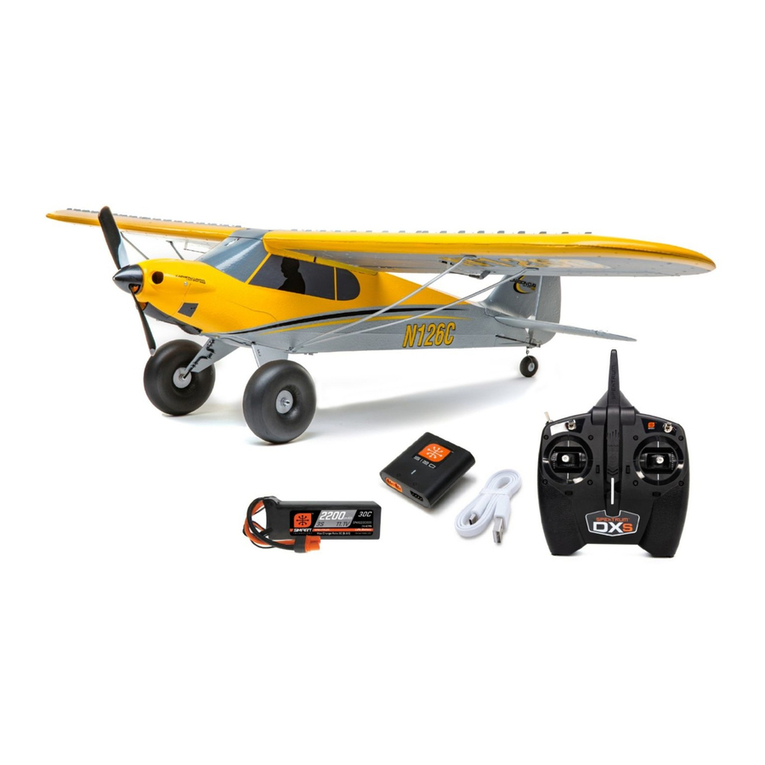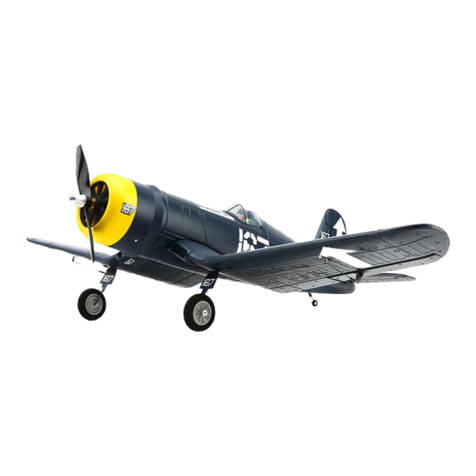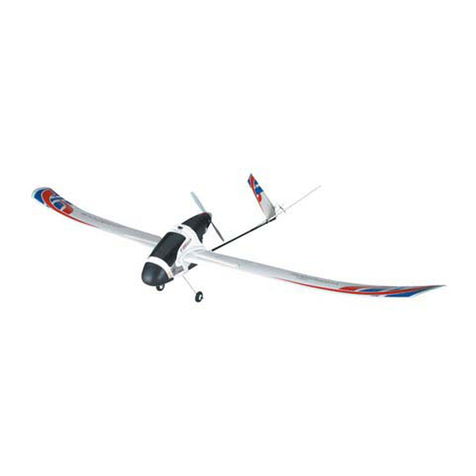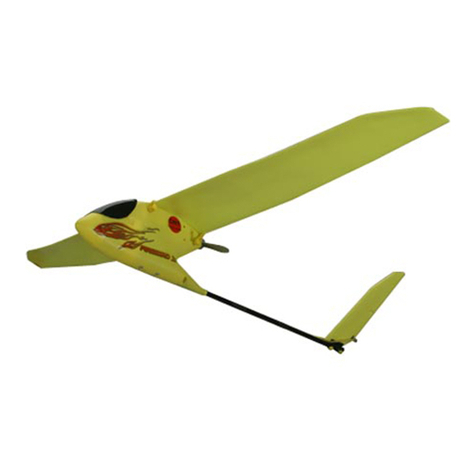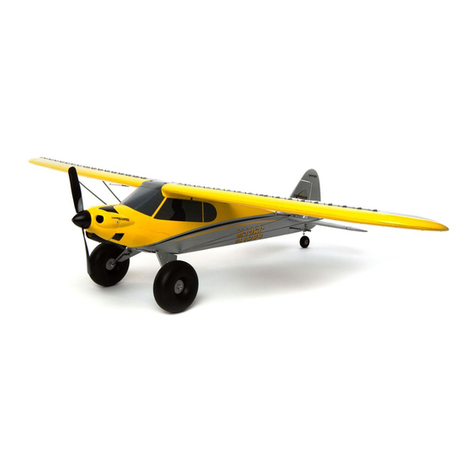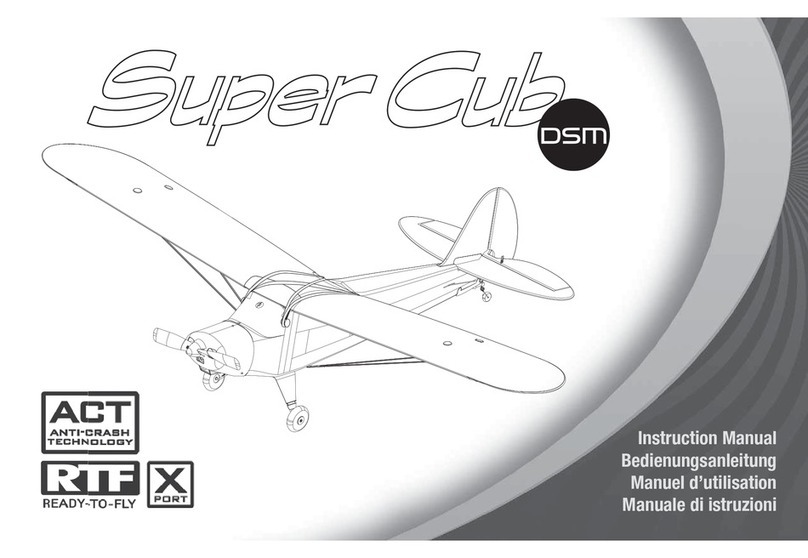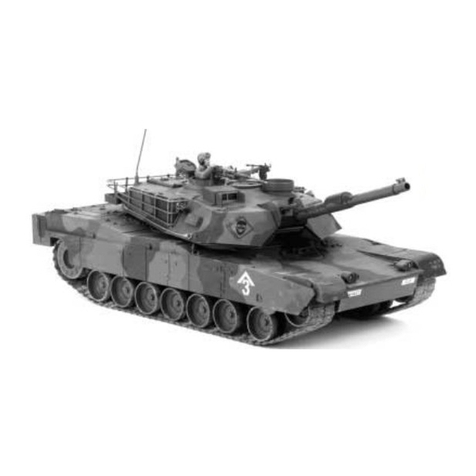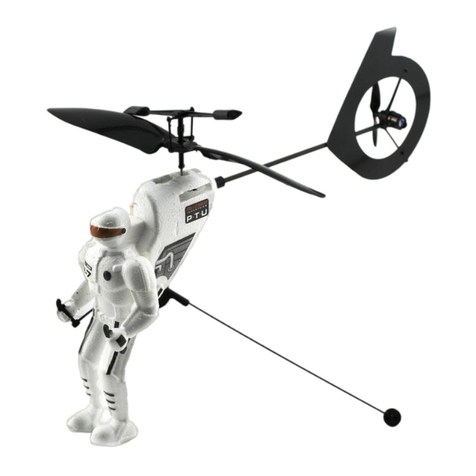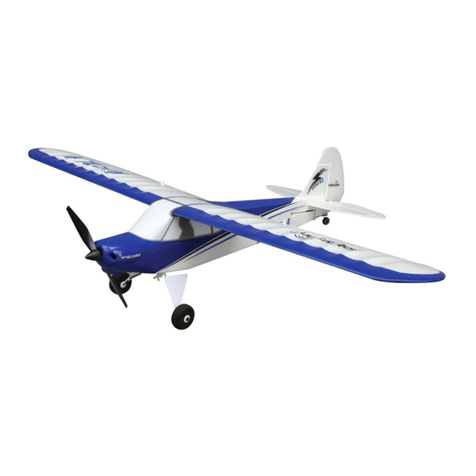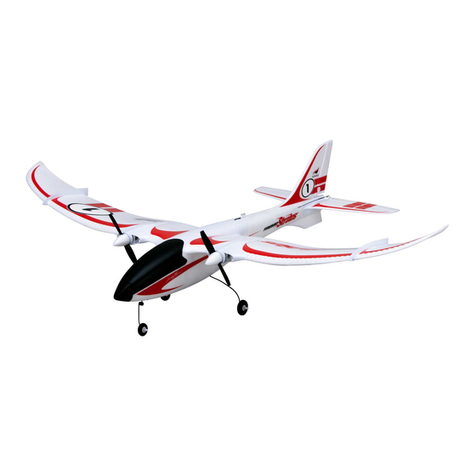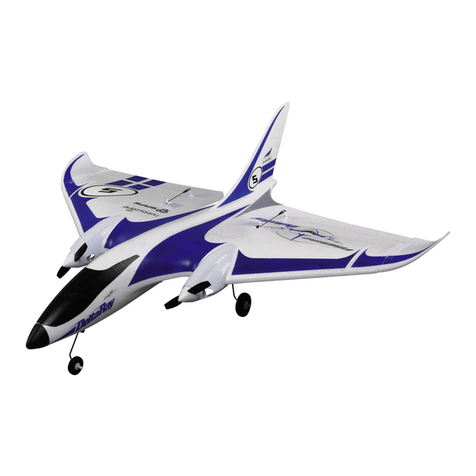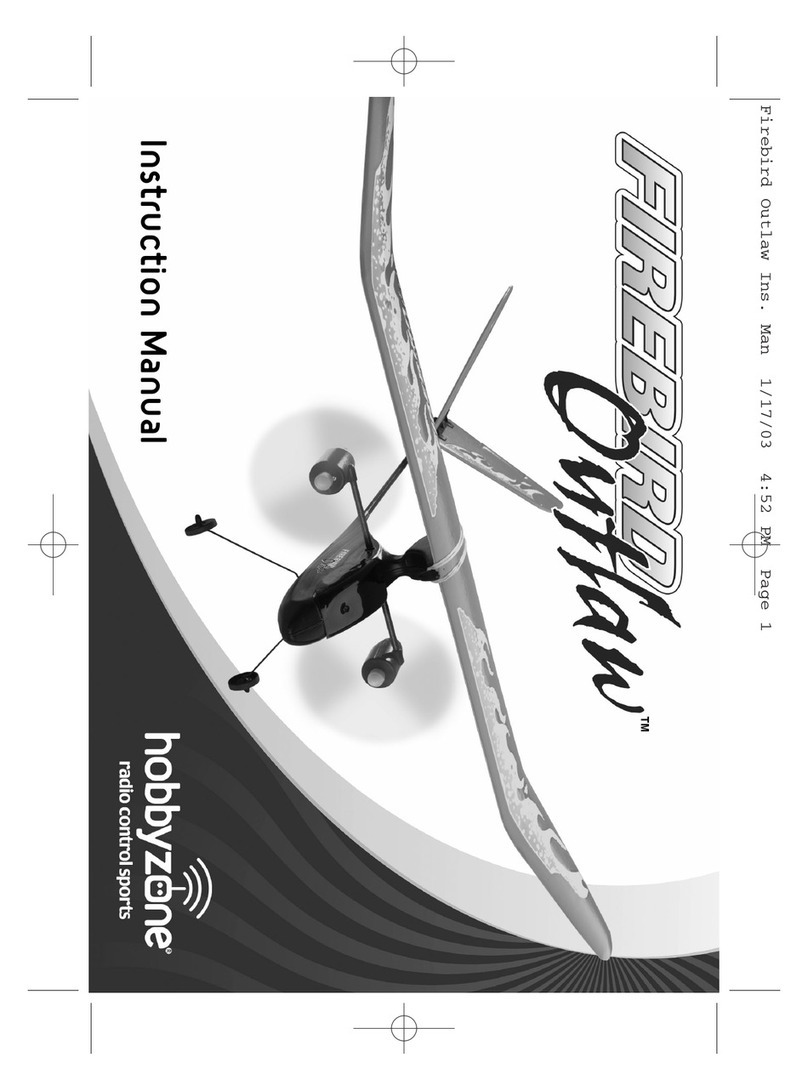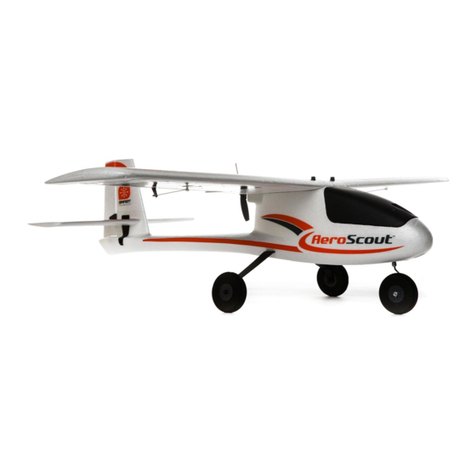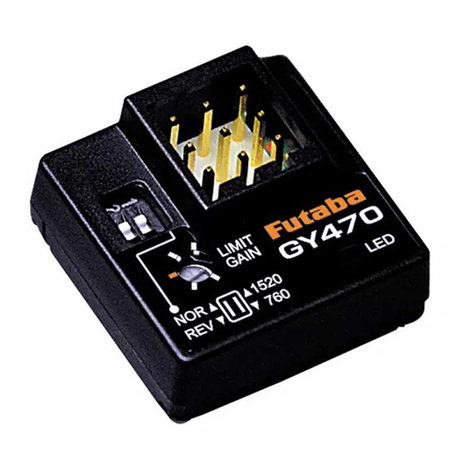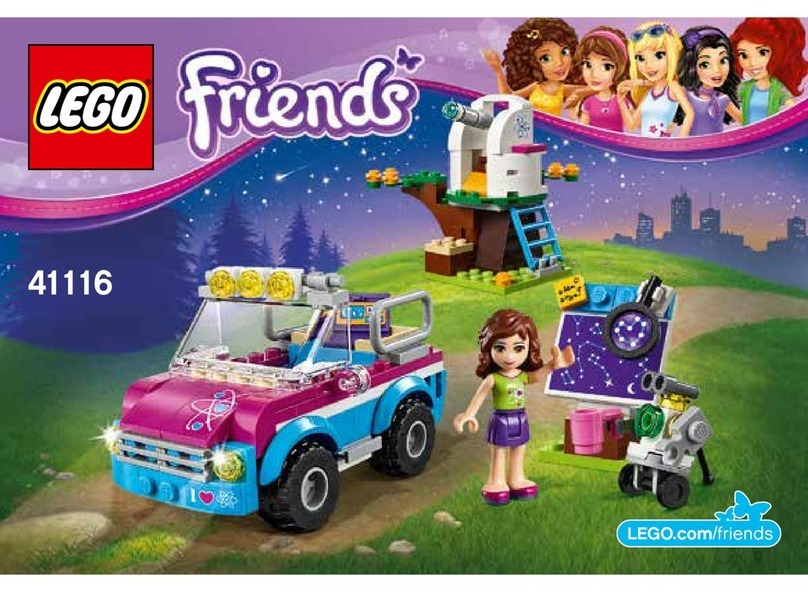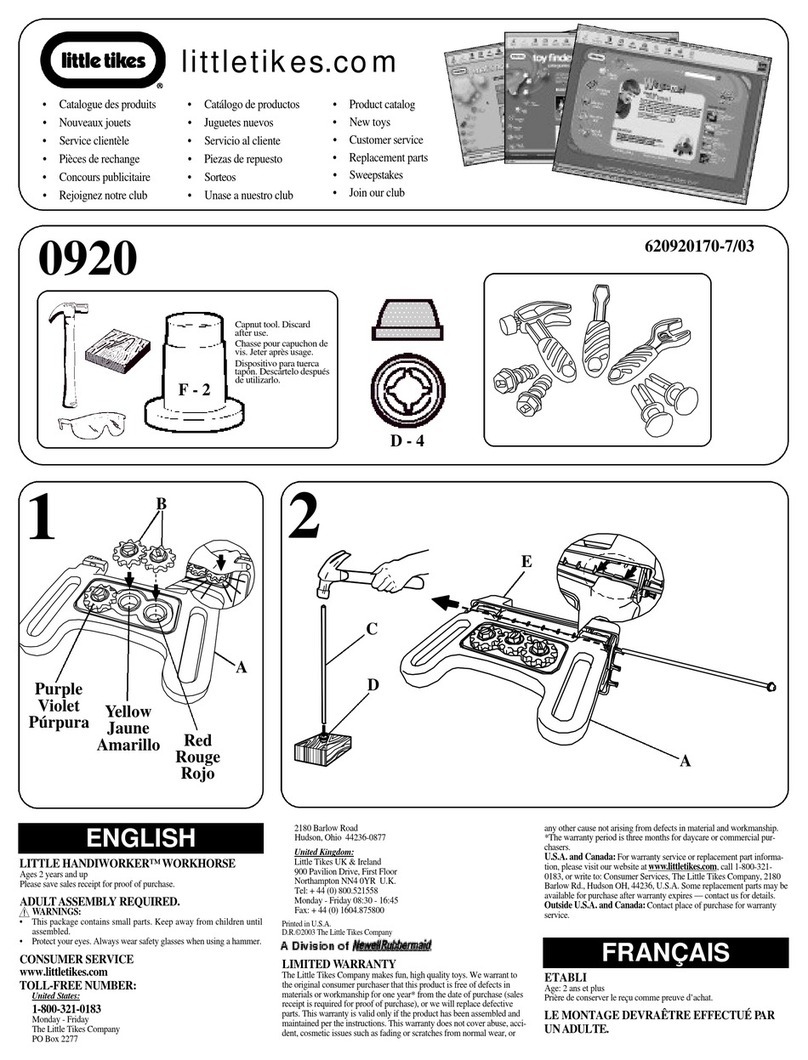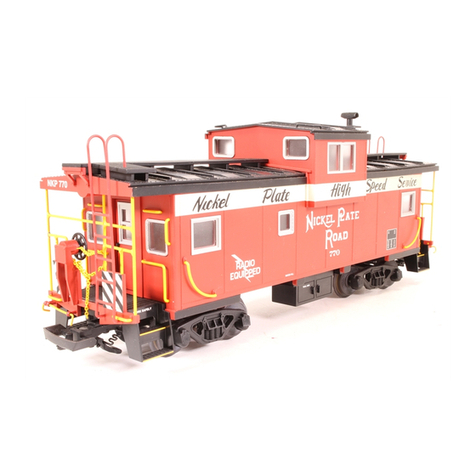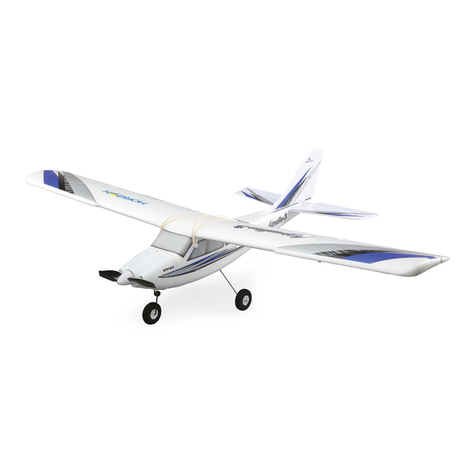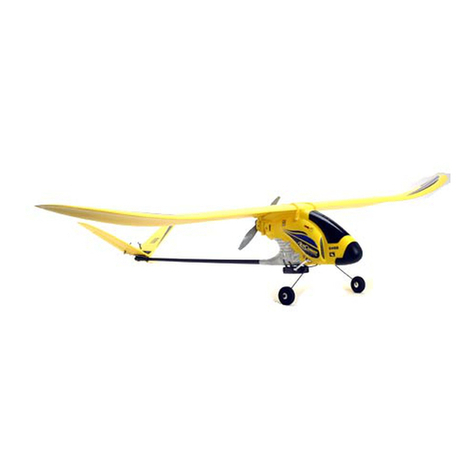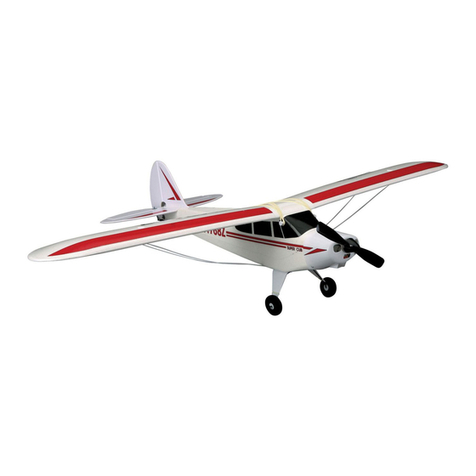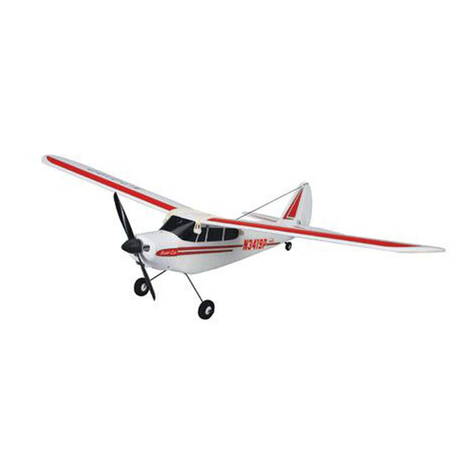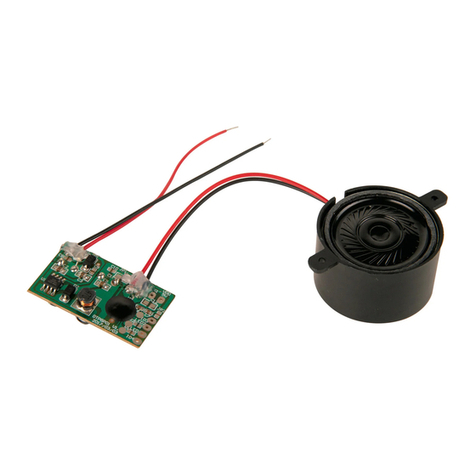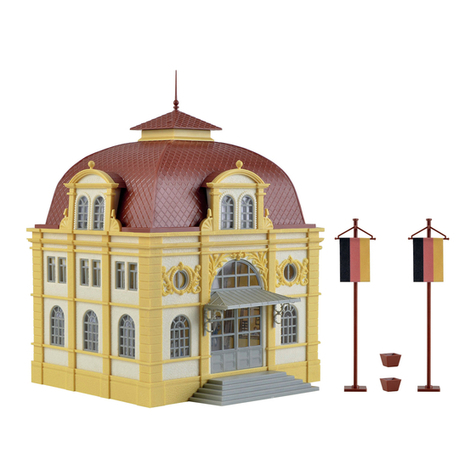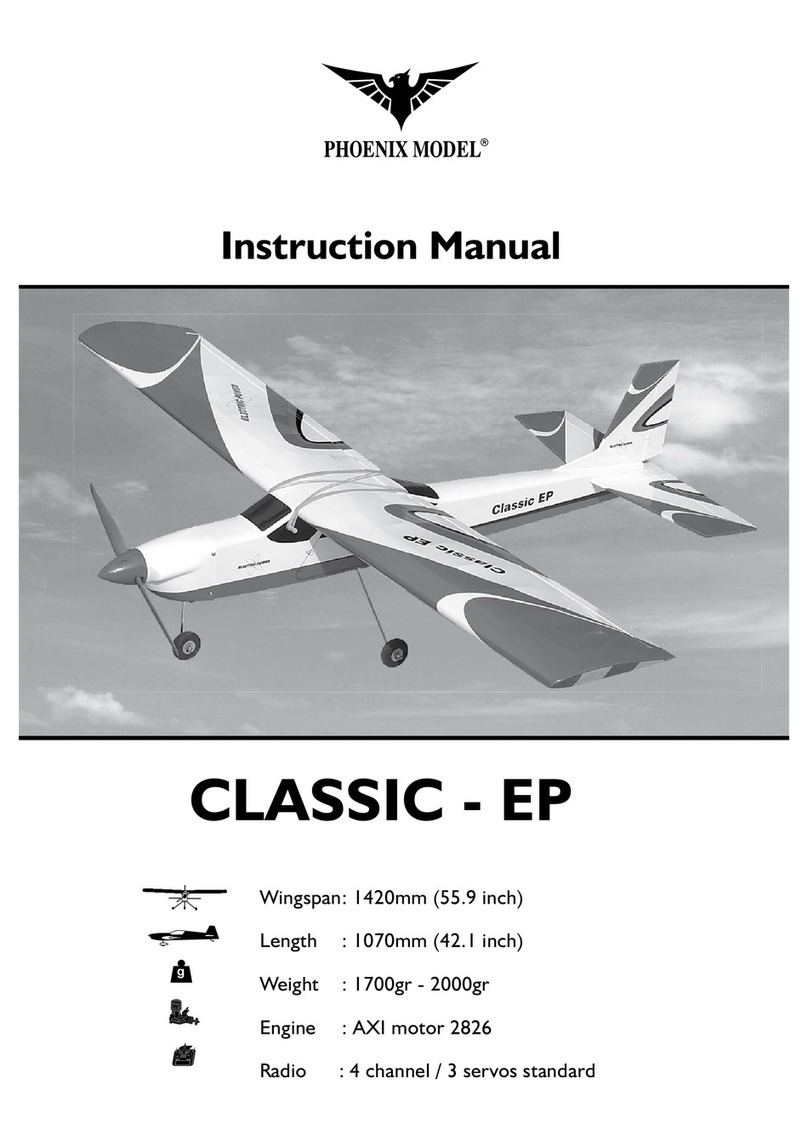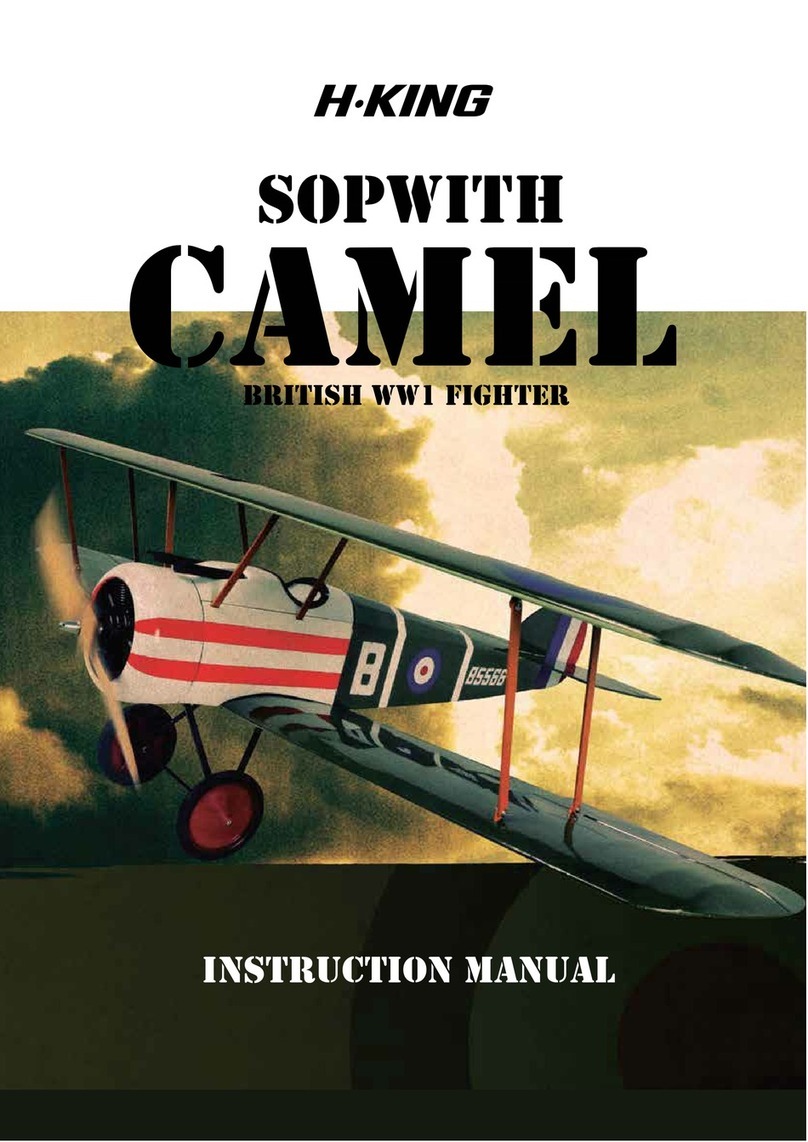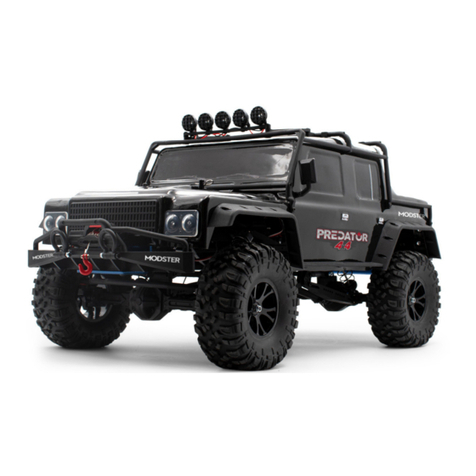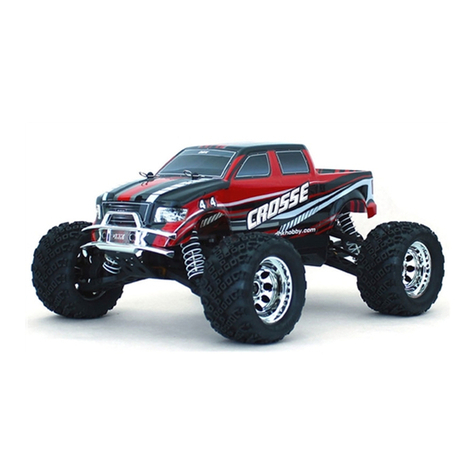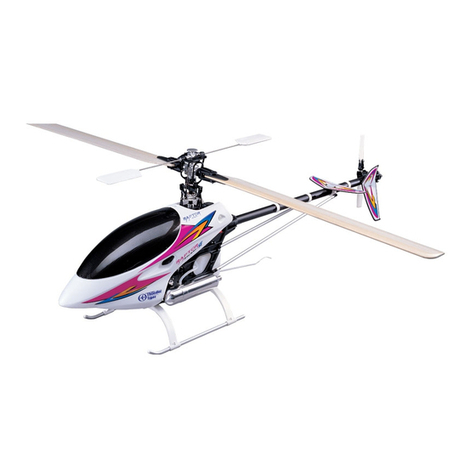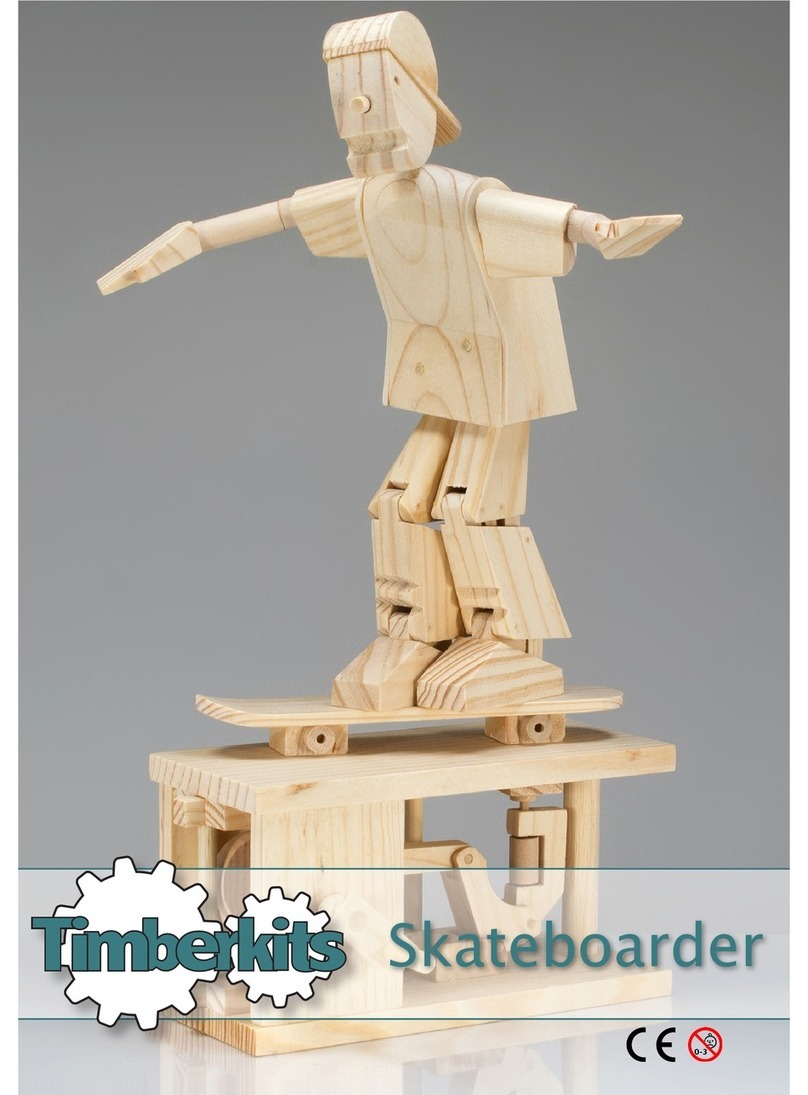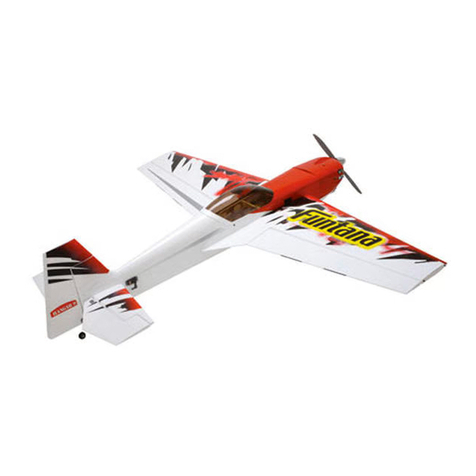EN
RTF
Transmitter continued
Understanding the Controls of the Transmitter
CR
A
B
D
E
F
G
H
I
J
K
L
M
N
O
P
Q
S
T
KEY
AAntenna
BHandle
CModes 1/3 only, Trainer/Bind Button
DHi/Lo Rate Switch
ERight Control Stick
FTrim Slider (for Up-down on stick)
GNeck Strap Connection
HTrim Slider (for Left-right on stick)
IMode Switch (1/3, or 2/4)
JMix Switch (Elevon only)
KServo Reverse Switches
LPower Switch (ON/OFF)
MTrim Slider (for Left-right on stick)
NTrim Slider (for Up-down on stick)
OLeft Control Stick
PLEDs
QACT/AUX Switch (Channel 5)
RModes 2/4 only, Trainer/Bind Button
SBattery Cover
TTrainer Port
* The diagram shows the
transmitter controls for Mode 2
and Mode 1 transmitters.
Antenna
Do not point the antenna tip at the model.
Signals transmit strongest from the antenna
shaft, not the tip.
WARNING: Do not pick up the
transmitter by the antenna. Do not
alter or put weight on the antenna. Damage
to antenna parts can decrease transmitter
signal strength, which can result in loss of
model control, injury or property damage.
1 2
For more information on the transmitter, go
to www.horizonhobby.com/products/
SPMR4400 and click on the support tab
for the Spektrum DX4e to download the
instruction manual.
Mode 2 Mode 1
Explanation of DX4e Transmitter LEDs, Switches and
Modes For the Glasair Sportsman
Trainer/Bind Button (C: Mode 1 or R: Mode 2)
The Trainer/Bind Button is used during binding or when connecting a trainer
cord (SPM6805) to the trainer port (T). For complete binding instructions, refer
to the binding section in this manual.
When using the trainer function, connect the trainer cord into the trainer port
in both the master (instructor) and the slave (student) transmitters. The master
transmitter must be powered ON and bound to the receiver. The slave transmit-
ter must be powered OFF. Any time you press and hold the trainer button
on the master, it will give control authority to the slave. Releasing the trainer
button returns control to the master.
IMPORTANT: The slave transmitter must always have the same reverse set-
tings as the master.
Hi/Lo Rate Switch (D)
This switch supports high and low rate functions on aileron, elevator and
rudder channels. In the upper, or “HI” position, servo travel is 100% on these
channels. In the lower, or “LO”, position, servo travel decreases to 70%. This
switch lets you quickly change control rates from high for aggressive maneu-
vers to low for smooth, precise maneuvers.When learning to fly, use low rate.
MD (Mode) Switch (I)
This switch changes channel assignments to the control sticks. Always ensure
the controls respond as desired before flying. A Mode 1 transmitter may be
switched to Mode 3, while a Mode 2 transmitter may be switched to Mode 4.
Mix Switch (J)
This switch enables a mix for elevons on Delta wing aircraft. If needed, refer
to the transmitter manual for more information.
NOTICE: The Glasair Sportsman aircraft is not a Delta wing aircraft. DO NOT
activate elevon mixing for this model. Always ensure the controls respond as
desired before flying.
Servo Reversing Switches (K)
These switches select the servo direction of each channel. Use your fingernail
or a small screwdriver to change the switch position to normal (NOR) or
reverse (REV) as needed to make transmitter controls operate the model as
desired. Perform the Control Direction Test before flying.
ACT/AUX Switch (Q)
This switch toggles between Virtual Instructor Training Step settings.
France RF Setting
The DX4e has a France RF setting that complies with French regulations. The
France RF setting should only be turned on when operating your transmitter
in France outdoors.
To set France mode (Illustration 1):
Hold the trainer button on the top of the transmitter while pushing and
holding the two sticks as shown below, then power ON the transmitter. After
hearing a series of descending beep tones (high to low), release the
trainer switch and the sticks. The France setting is now turned on. Bind the
transmitter to the receiver for the change to take effect.
To set Standard mode (Illustration 2):
Hold the trainer button on the top of the transmitter while pushing and hold-
ing the two sticks as shown below, then power ON the transmitter. After hear-
ing a series of ascending beep tones (low to high), release the trainer switch
and the sticks. The France setting is turned off.
5
